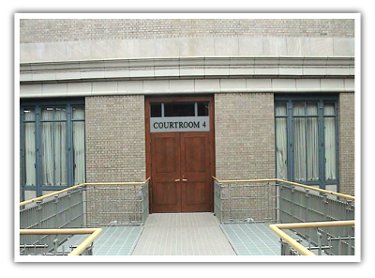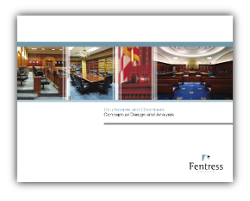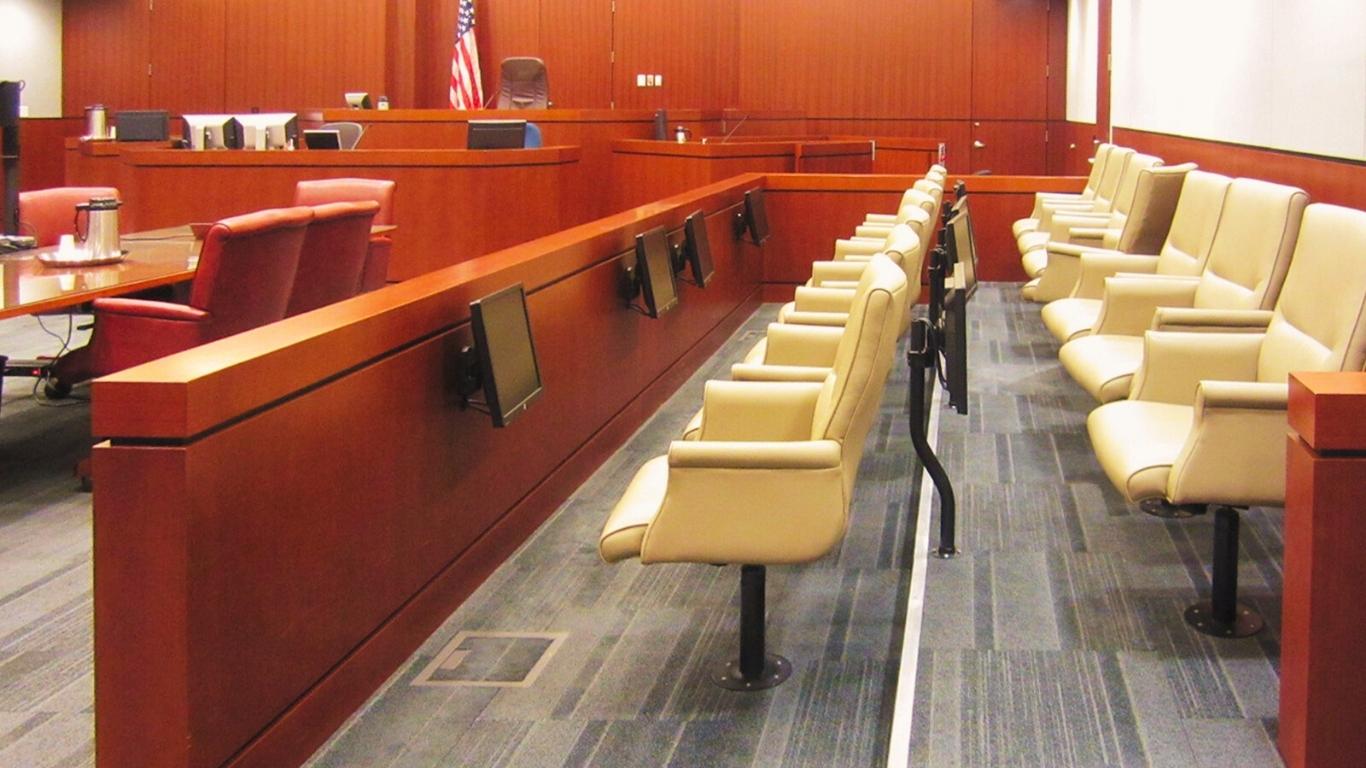Trial courtrooms that accommodate criminal proceedings require five points of access to achieve a secure separation of participants: one each for the judge, law clerks, jurors, the public, and prisoners. More often than not, we find that the framework of existing circulation patterns, especially in historic courthouses, does not provide an opportunity for readily achieving the required number of separate access points in a courtroom R&A project. Older courtrooms may provide only two access points; one for the judge and one to be shared by all other participants.
It is often challenging to improve upon these conditions and may require applying highly creative (and perhaps unorthodox) solutions.
An interesting example of an atypical solution to improve access is a  Pennsylvania courthouse R&A project where four trial courtrooms were renovated to align with construction of a new, adjacent annex. The four courtrooms in the 1930s era historic courthouse were not designed to provide separate and secured access points for prisoners.
Pennsylvania courthouse R&A project where four trial courtrooms were renovated to align with construction of a new, adjacent annex. The four courtrooms in the 1930s era historic courthouse were not designed to provide separate and secured access points for prisoners.
To solve this problem, with the annex's construction, the courtrooms' interior layouts were rotated 180 degrees. This permitted new public access to the courtrooms from the annex atrium in locations that were previously exterior windows. The original judges’ access locations from existing building corridors were converted to secured access points for prisoners. For reference, see the photo of the new atrium entry to the courtroom.
In our next courthouse blog, we will focus on the size of courtrooms and address the question, “Is it more efficient to have different-sized courtrooms according to function or courtrooms of the same size regardless of function?"
_______________________________________________________
Click the image to download our Courtrooms and Chambers: Conceptual Design and Analysis eBook.























